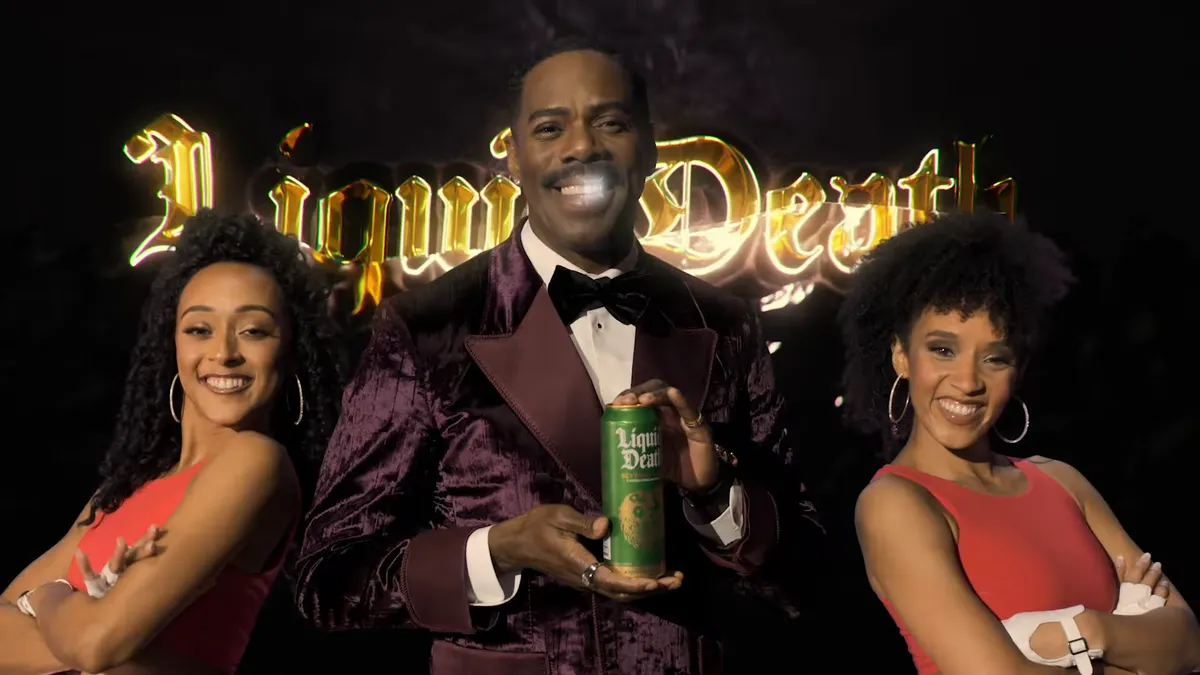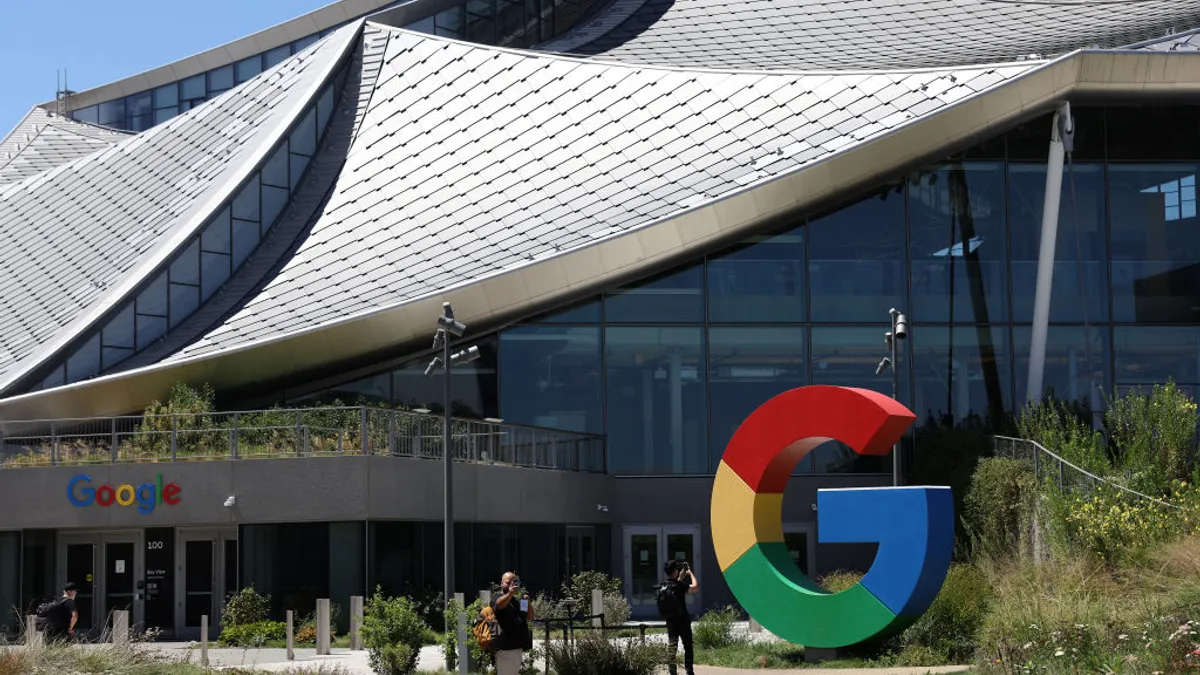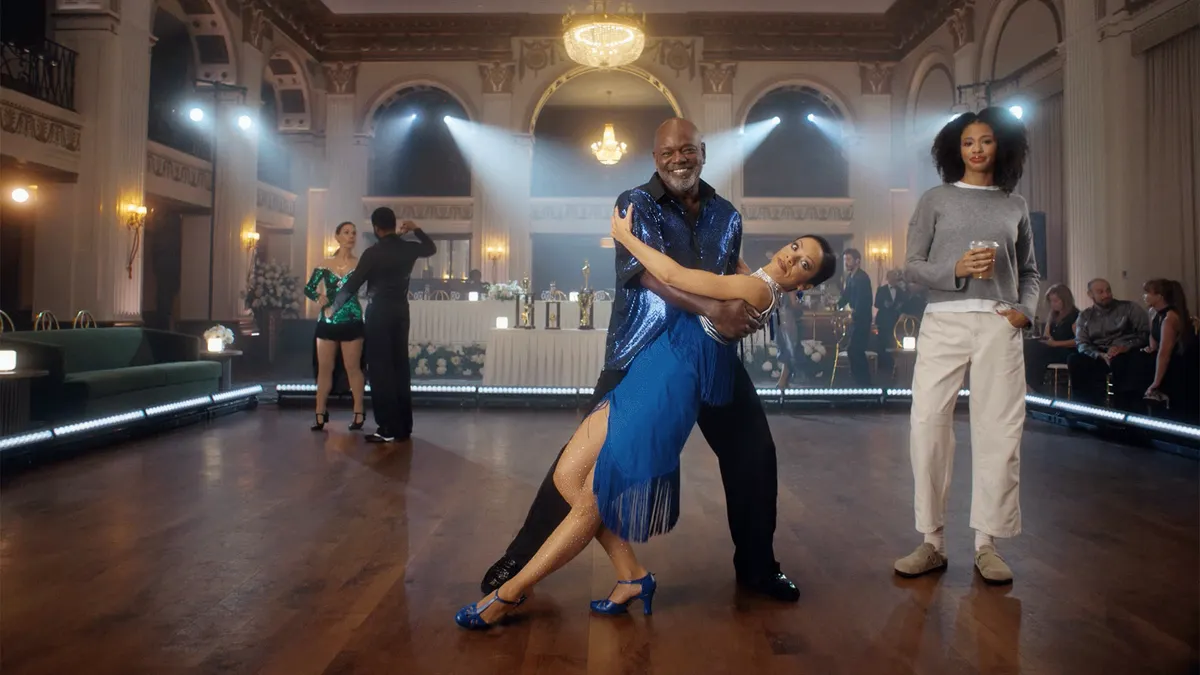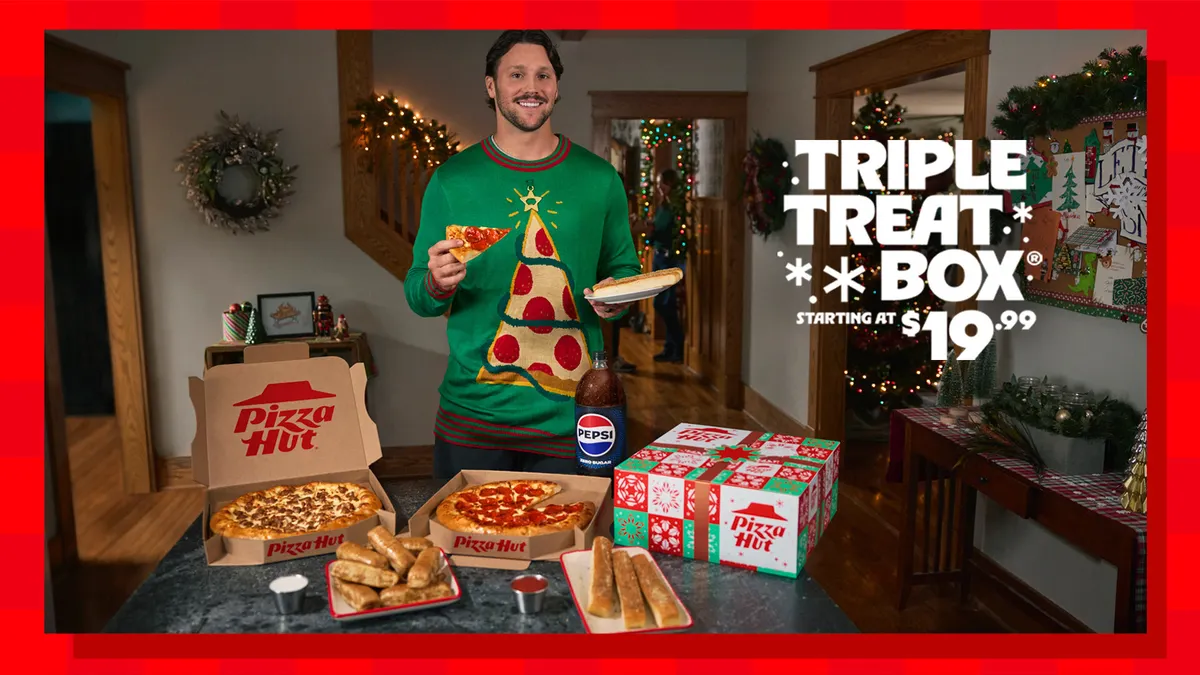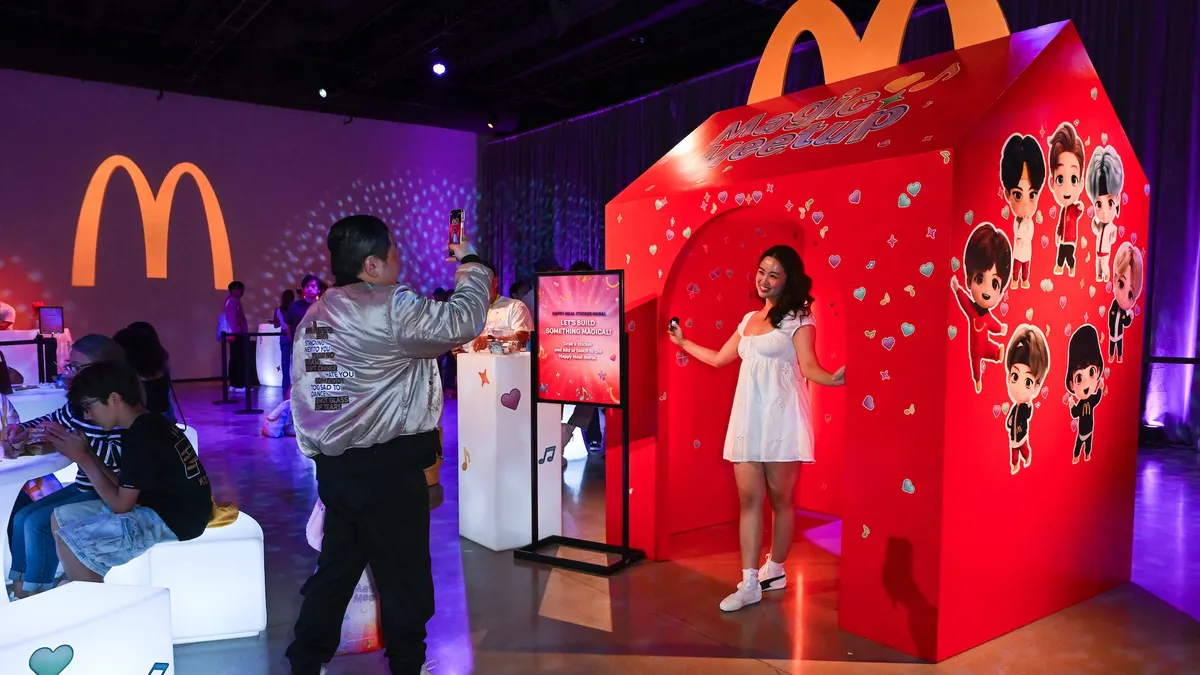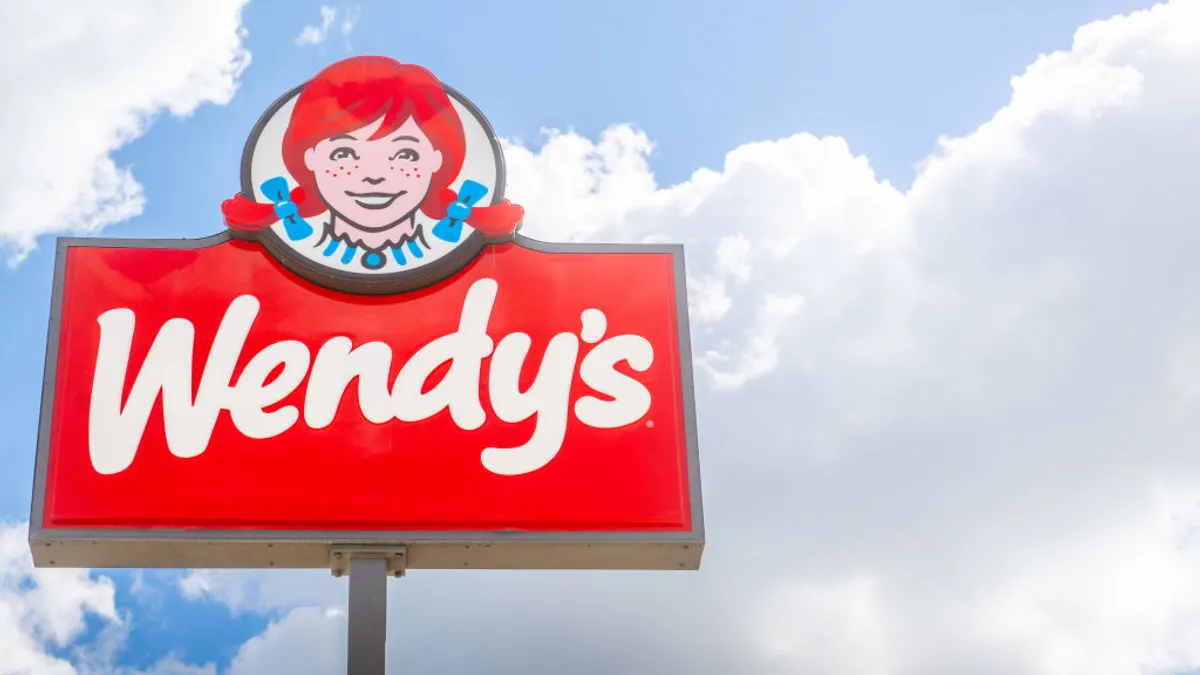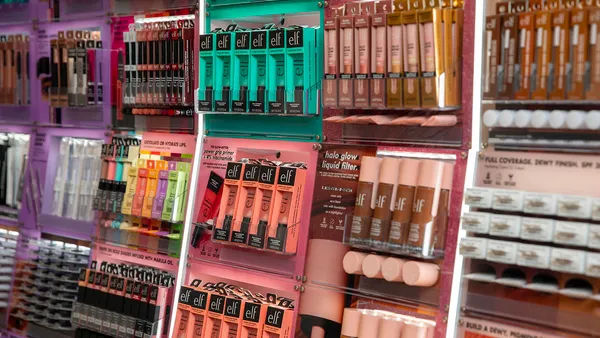Campaign Trail is our analysis of some of the best new creative efforts from the marketing world. View past columns in the archives here.
Imagine a dystopian police state dominated by poverty, with most people lacking access to food and medicine and where corporate media giants pacify the masses with trashy reality TV and violent game shows. This increasingly resonant hypothetical is the setting of “The Running Man,” a sci-fi action thriller that hits theaters Friday (Nov. 14).
“The Running Man” — the second adaptation of a Stephen King novel that was previously made into an Arnold Schwarzenegger vehicle in 1987 — centers on an eponymous game show where contestants must survive 30 days while hunted by assassins. The movie’s world is also a welcome home for a brand known for edgy marketing that emphasizes helping consumers “murder” their thirst: Liquid Death.
Liquid Death teamed up with “The Running Man” for more than a branded campaign or traditional product placement. The canned beverage brand serves as the official beverage sponsor of the show-within-the-movie, with a commercial for Liquid Death running during the film.
In an online video released in the lead-up to the blockbuster’s release, Colman Domingo appears as the dapper TV host Bobby T., complete with shiny velvet suit and surrounded by a coterie of workout gear-wearing background dancers. In between shots of explosions, rocket launches and hand-to-hand violence — some with a branded on-screen display reminiscent of sponsored sports replays — Bobby T. pitches Liquid Death as a way to “bury your thirst in a shallow grave.” After all, “you can’t spell bloodthirsty without the thirsty.”
The in-film commercial, which is similar but not identical to the version released online, is the culmination of a creative process that explored what Liquid Death would do if the world of “The Running Man” actually existed.
“We would clearly sponsor this brutal, bloodthirsty game show, almost in the same way that other beverage bands sponsor things like ‘The Voice’ or ‘American Idol’ or whatever,” said Andy Pearson, the vice president of creative at Liquid Death. “Why don’t we just treat it like that kind of sponsorship, except we’re killing people?”
Brands on film
Liquid Death was approached by Paramount Pictures, the studio behind “The Running Man,” because of its track record of bold, attention-grabbing partnerships. Those include collaborations with brands like E.l.f. Cosmetics and Dr. Squatch and celebrities as varied as Ozzy Osbourne and Kylie Kelce.
As the brand spitballed ideas and worked with the Paramount team, an opportunity surfaced to appear in the film and help introduce one of the story’s characters. Rather than showing someone simply reaching for a can of Liquid Death, the brand would have Domingo’s Bobby T. hawk the product in an actual in-universe commercial.
The partnership speaks to Liquid Death’s appeal as a one-stop shop for creative co-promotion, especially since the beverage marketer wields a built-in audience of over 14 million followers across Instagram and TikTok. Along with the latest campaign, Liquid Death this year collaborated with movies like “Spinal Tap II: The End Continues” and “The Toxic Avenger.”
“It’s not like we are paying for IP — [brands] come to us as essentially … an ad agency, a production company and an influencer media channel, all wrapped in one,” Pearson said. “We’re very lucky that people think of us when they have their budgets to help co-promote the film.”
For Pearson, the connection between brand marketing and film fandom goes back to childhood. As a kid, he would watch “Back to the Future Part II” on VHS whenever he was home sick from school. A notable part of the 1989 sci-fi sequel was how it imagined what the world, including consumer brands, would look like in 2015, complete with Mattel hovercrafts, self-lacing Nike shoes and rehydrated Pizza Hut pies.
“What I think was really fun about that film was all the ways that the brands were integrated into it,” Pearson said. “It is obviously way over the top, but I think part of the charm of that film is imagining, if those brands continue 30 or 40 years in the future, how would they change and morph?”
Pearson credits “Back to the Future Part II” as part of the reason he got into the advertising business, but the movie also taught him a lesson that was crucial to Liquid Death’s collaboration with “The Running Man.”
“When it’s done in a respectful and creative way, product placement can enhance — rather than distract — from the film,” Pearson said.



